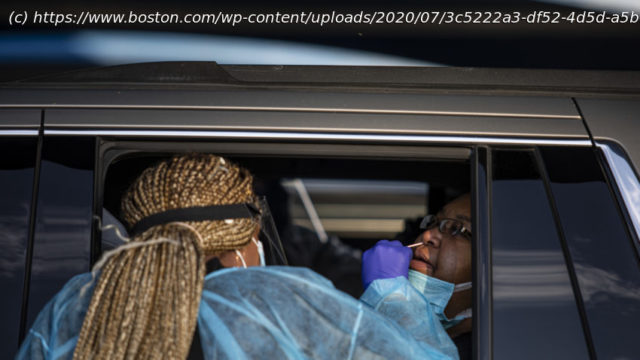Researchers around the world are working on the next generation of coronavirus tests that give answers in less than an hour, without onerous equipment or …
Researchers around the world are working on the next generation of coronavirus tests that give answers in less than an hour, without onerous equipment or highly trained personnel.
The latest so-called point-of-care tests, which could be done in a doctor’s office or even at home, would be a welcome upgrade from today’s status quo: uncomfortable swabs that snake up the nose and can take several days to produce results.
The handful of point-of-care devices now on the market are frequently inaccurate. The up-and-coming tests could yield more reliable results, researchers say, potentially leading to on-the-spot testing nationwide. But most of the new contenders are still in early stages, and won’t be available in clinics for months.
Some of the tests in development swap brain-tickling swabs for plastic tubes that collect spit. Others dunk patient samples into chemical cocktails that light up when they detect coronavirus genes. Another type of test identifies coronavirus proteins in minutes, using a cheap device that’s easy to produce in bulk and deploy in low-resource settings.
“To combat this virus, we need to test widely and frequently, and get the results back quickly,” said Dr. Zev Williams at Columbia University, who is developing a coronavirus spit test that can run in about 30 minutes. “That requires a genuine paradigm shift in the way we go about testing for it.”
Once scaled up and distributed, faster tests could be used in hospitals to quickly screen emergency room patients. Schools and workplaces could buy them to monitor the health of children and employees. With additional tinkering, some tests could even be developed to work as simply as a pregnancy test, yielding a clean-cut positive or negative result in the comfort of a person’s home.
“The quicker and easier tests can be done,” the more ubiquitous they can be, said Dr. Amesh Adalja at the Johns Hopkins University Center for Health Security. “That’s going to help people get back to some semblance of normalcy.”
Most diagnostic tests on the market now hunt for bits of genetic material specific to the coronavirus. (This distinguishes diagnostic tests from antibody tests, which sample the blood and show if a person has been exposed to the virus in the past.)
The gold-standard method involves funneling a long, absorbent swab a few inches into the nose until it hits the nasopharynx, the part of the airway where the nasal passage meets the throat and a common target of the coronavirus.
“The moment you see the swab, you’re like, ‘Oh no, my face isn’t that deep,’” said Fernanda Ferreira, a virologist at Harvard University who took a nasopharyngeal swab test in April. “Turns out it is.”
The virus’ genes must be extracted from the sample with a specific suite of chemicals. The material is then processed through a laboratory technique called polymerase chain reaction, or PCR, in which a machine cycles through several temperature changes to amplify genetic material. This step is key to these tests’ success: Copying genetic material over and over means that even tiny amounts of the virus can be spotted.






